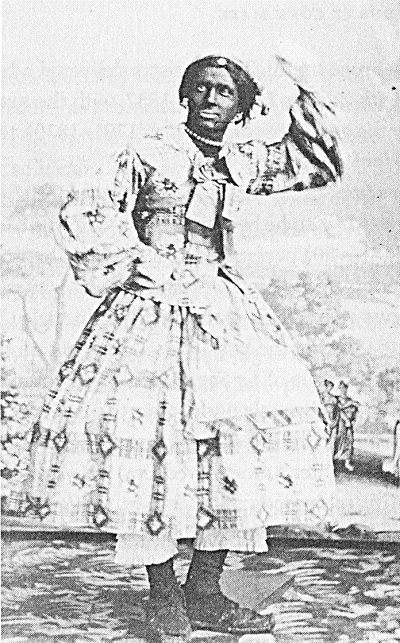
| Travestie
geschiedenis |
Travestie
is sinds de 19e eeuw een vast onderdeel van de
homocultuur, waarin talrijke travestieartiesten of dragqueens zijn die
optreden
in homo-uitgaansgelegenheden en bij homo-evenementen. Vroeger was het
theater
een vrijplaats voor travestieten (wat in veel culturen is nog steeds
het geval
is)
In the late 1800s to the mid-1900s, pantomime dames became a popular form of female impersonation in Europe. This was the first era of female impersonation in Europe to use comedy as part of the performance, as opposed to the serious Shakespearean tragedies and Italian operas The dame became a stock character with a range of attitudes from "charwoman" to "grande dame" that was mostly used for improvisation. The most famous and successful pantomime dame was Dan Leno. After the World Wars, the theater and movie scenes were changing and the use of pantomime dames was on the decline.
Development
of the drag queen in America started with the development of the blackface
minstrel show. Originally the performers would only mock
African American men, but
as time went on they found it amusing to mock African American
femininity as
well. They performed in comedic skits, dances, and "wench" songs. Far
from the progressive freedom of modern drag, these minstrel shows and
their
"wench players," were used by white men to both mock and oppress both
women and African Americans.

Rollin Howard in wench costume 
The broad
comedic stylings of the minstrel shows helped develop the vaudeville
shows of the
late 1800s to the
early 1900s. With this shift, the "wench players" became "prima
donnas", and became more elegant and refined, while still retaining
their
comedic elements. While the "wenches" (jonge meiden) were purely
American creations, the "prima donnas" were inspired by both America
and European cross-dressing shows, like Shakespearean actors and
castrati. With
the United States shifting demographics, including the shift from farms
to
cities, Great Migration of African Americans, and an influx of
immigrants,
vaudeville's broad comedy and music expanded the audience from
minstrelsy With
vaudeville becoming more popular, it allowed female impersonators to
become
popular as well. Many female impersonators started with low comedy in
vaudeville and worked their way up to perform as the prima donna.
Famous female
impersonator Julian Eltinge found success in this and eventually made
his way
to the broadway stage performing as a woman. At this time being a
female impersonator
was seen as something for the straight white male, and any deviation
was
punished. Connection with sex work and homosexuality eventually lead to
the
decline of vaudeville during the Progressive Era. Both the minstrelsy
and
vaudeville eras of female impersonation led to an association with
music,
dance, and comedy that still lasts today.
A drag show
is an entertainment consisting of a variety of songs, monologues or
skits
featuring either single performers or groups of performers in drag
meant to
entertain an audience. They range from amateur performances at small
bars to
elaborately staged theatrical presentations. Many drag shows feature
performers
singing or lip-synching to songs while performing a pre-planned
pantomime, or
dancing. The performers often don elaborate costumes and makeup, and
sometimes
dress to imitate various famous female singers or personalities. Some
events
are centered around drag, such as Southern Decadence where the majority
of
festivities are led by the Grand Marshals, who are traditionally drag
queens.
| Als je
een aanvulling of opmerking hebt over deze site dan kun je een
mailtje sturen naar Transarchief |